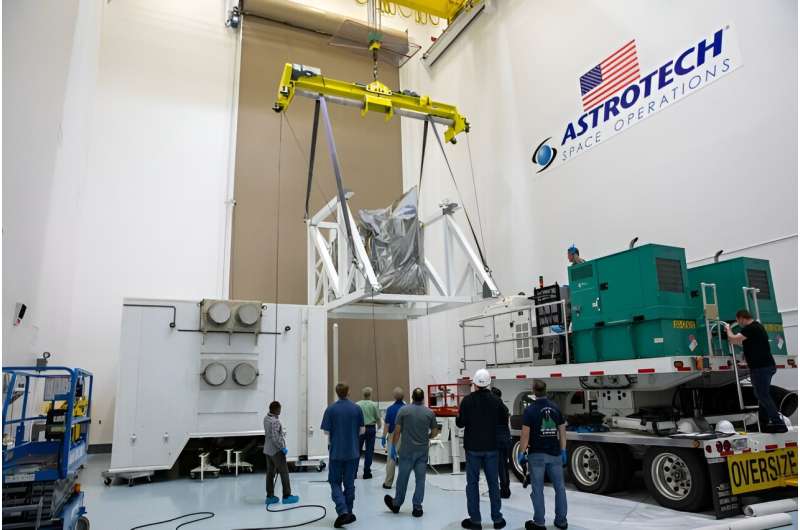Technicians monitor movement as a crane hoists NASA’s Plankton, Aerosol, Cloud, ocean Ecosystem (PACE) observatory spacecraft after being uncrated on Wednesday, Nov. 15, 2023, at the Astrotech Space Operations Facility near the agency’s Kennedy Space Center in Florida. Credit: NASA/Ben Smegelsky
NASA's PACE spacecraft completed its journey Tuesday, Nov. 14, from NASA's Goddard Space Flight Center in Greenbelt, Maryland, to the Astrotech Spacecraft Operations facility near the agency's Kennedy Space Center in Florida.
Engineers and technicians arrived ahead of the spacecraft to prepare ground equipment for offloading and processing before fueling and final encapsulation.
PACE, which stands for Plankton, Aerosol, Cloud, and ocean Ecosystem, is targeted to launch aboard a SpaceX Falcon 9 rocket in early 2024, from Space Launch Complex 40 at Cape Canaveral Space Force Station in Florida. The mission will help clarify how the ocean and atmosphere exchange carbon dioxide, improve upon NASA's 20-plus years of global satellite observations of ocean biology and atmospheric aerosols, and continue key measurements related to air quality and climate.
The PACE project is managed by NASA's Goddard Space Flight Center. The agency's Launch Services Program, based at Kennedy Space Center, is responsible for managing launch service for the PACE mission.
Provided by NASA























